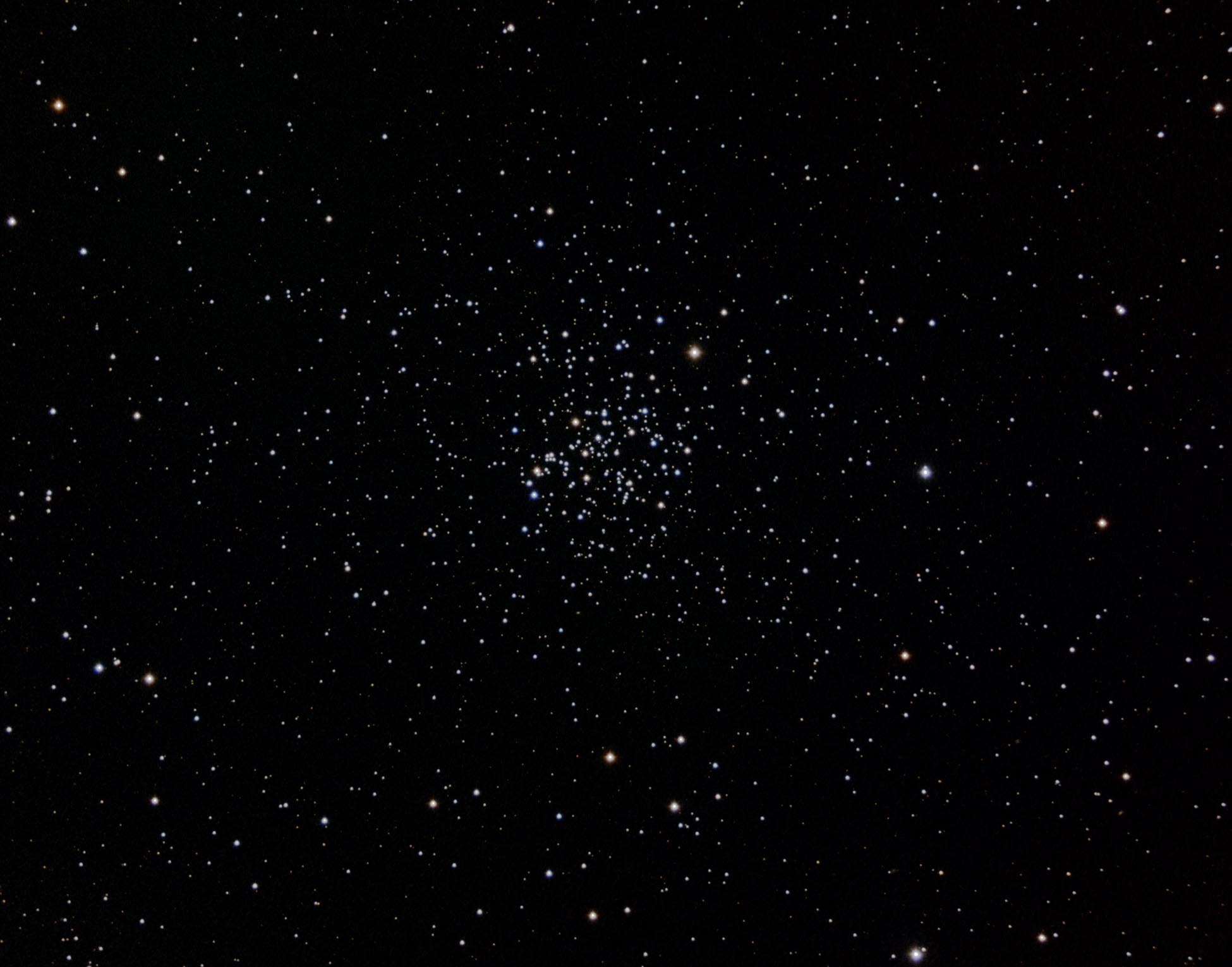- M 67 (NGC 2682)
M 67 is a large, bright open cluster in the constellation Cancer, which also contains the famous Praesepe or Beehive Cluster (M 44). It was discovered in 1779 by the German astronomer Johann Gottfried Kohler. This discovery wasn't published, so Messier made an independent discovery of this object in April 1780.
M 67 contains 776 member stars down to a visual magnitude of 17, and there are likely to be more fainter members. This cluster contains a large number of red giant stars. This attests to the great age of this cluster, estimated to be approximately 3.7 thousand million years. This is around the age of our solar system. This may not be a coincidence, as studies of the orbits of our Sun and M 67 around the Milky Way Galaxy indicate that they were at one time in close proximity. Some have speculated that our Sun may have formed along with the other stars of this cluster and was later ejected from the cluster. This is supported by the chemical composition of our Sun, which is similar to stars in M 67.
Currently, M 67 lies at a distance of around 2900 LY and has a physical diameter of around 21 LY. With a visual magnitude of 6.9, it can be seen with the naked eye under very clear, dark sky conditions.
|










 Return to SOCO Image Gallery
Return to SOCO Image Gallery
 Return to SOCO Main Page
Return to SOCO Main Page